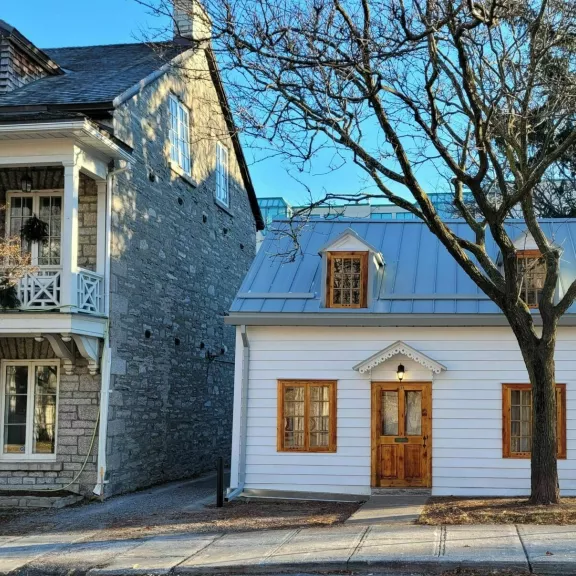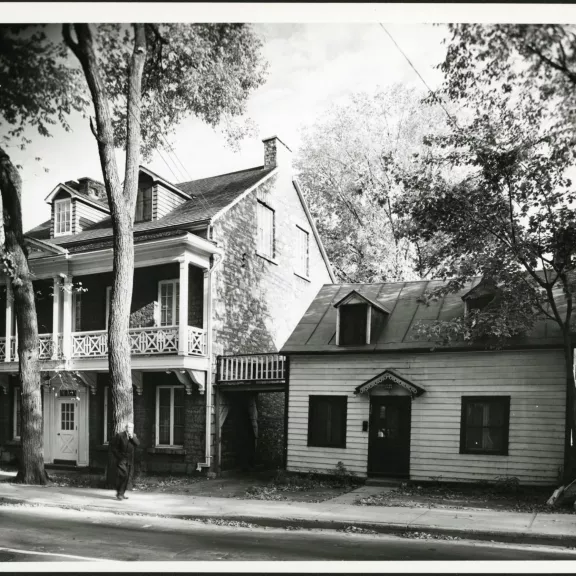
In 2021, Pomerleau restored the Rochon Residence, one of the oldest houses in Ottawa’s Lowertown. The historic home was first owned by woodcarver, Flavien Rochon. Rochon carved the stalls and sanctuary of the Notre-Dame Cathedral Basilica of Ottawa in 1844, and the interior features in the Parliament’s Library.
The National Capital Commission (NCC) hired Pomerleau as their construction manager to rehabilitate the nearly 200-year-old building. The original construction of the building dates to the early 1830s. It was built with materials such as squared timber and wood siding, representing a traditional one-story house of Lowertown. Unlike most of the original timber homes in the Bytown area which have gave way to larger structures built of stone and brick, the Rochon House remained mostly original in its structure.

Pomerleau worked to preserve the original structure and outer shell of the building by not altering its architectural and heritage value. The timbers struggled with moisture over the years and required rehabilitation work. This work included adding extra floor joists for more stability and reinforcing a section of roof between the original structure. The building’s interior was also rehabilitated. While onsite, workers uncovered a hidden dormer with original cedar shingles that had been sealed in during an earlier addition.
The historical building recently received a modern twist when it started being used for the National Capital Commission’s, Capital Culture Lives Here program. The program aims to connect Canadians with arts and culture, through partnerships with cultural organizations. As of March 2022, it has been home to residency programs of SAW Gallery, an artist run centre in Ottawa. SAW’s program seeks to create intercultural exchanges between artists from circumpolar regions and between Aboriginal and non-Aboriginal artists
Taking the time and pride to understand the nature of this heritage structure, helped us overcome many challenges. By evaluating different approaches that were unique to the Rochon restoration process, we were able to preserve the building’s architecture and its significance in the 21st century, for the community.
The work Pomerleau did at the Rochon House is reflective of our vision to foster communities and innovation through construction. The Rochon House holds a culturally historical legacy within Ottawa and the art community. The continuation of this legacy is important to us because the future programs that will take place within the home will give birth to new creative discoveries and pieces. This is something we as creators ourselves, can cherish.